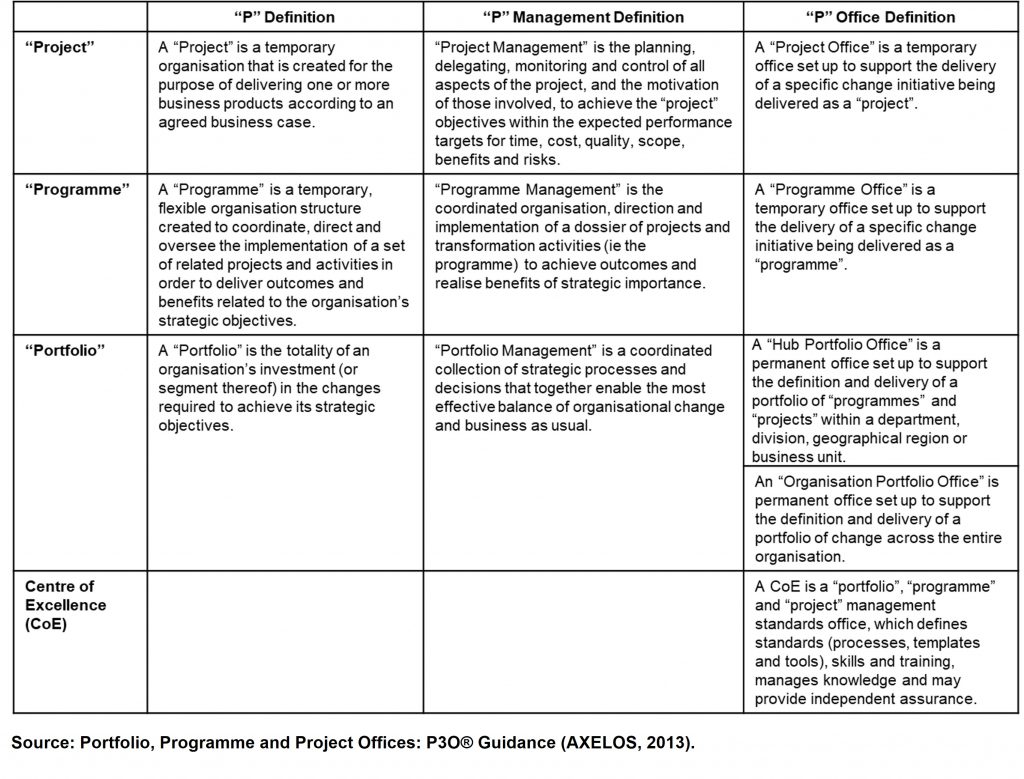

The Office of Government Commerce (OGC) was a UK government body established in 2000 to promote efficiency and best practices in public sector procurement, project management, and programme management. One of its significant contributions was the development of the P3O® (Portfolio, Programme, and Project Offices) framework, first published in 2008. This framework provides principles and guidance on designing and operating effective support structures for delivering change. P3O® was created in response to the growing need for organisations to align their strategies with execution and to standardise the roles of PMOs across different contexts.
In 2014, the stewardship of the OGC’s best practice portfolio was transferred to AXELOS, a joint venture between the UK Cabinet Office and Capita. AXELOS continues to maintain and publish the official P3O® guidance, with the most recent version being “Portfolio, Programme and Project Offices: P3O® Guidance” (AXELOS, 2013).
The guidance outlines a hierarchy of structures, which is summarised in Exhibit 1. It also notes that “projects” can stand alone and do not need to be part of a “programme”.
